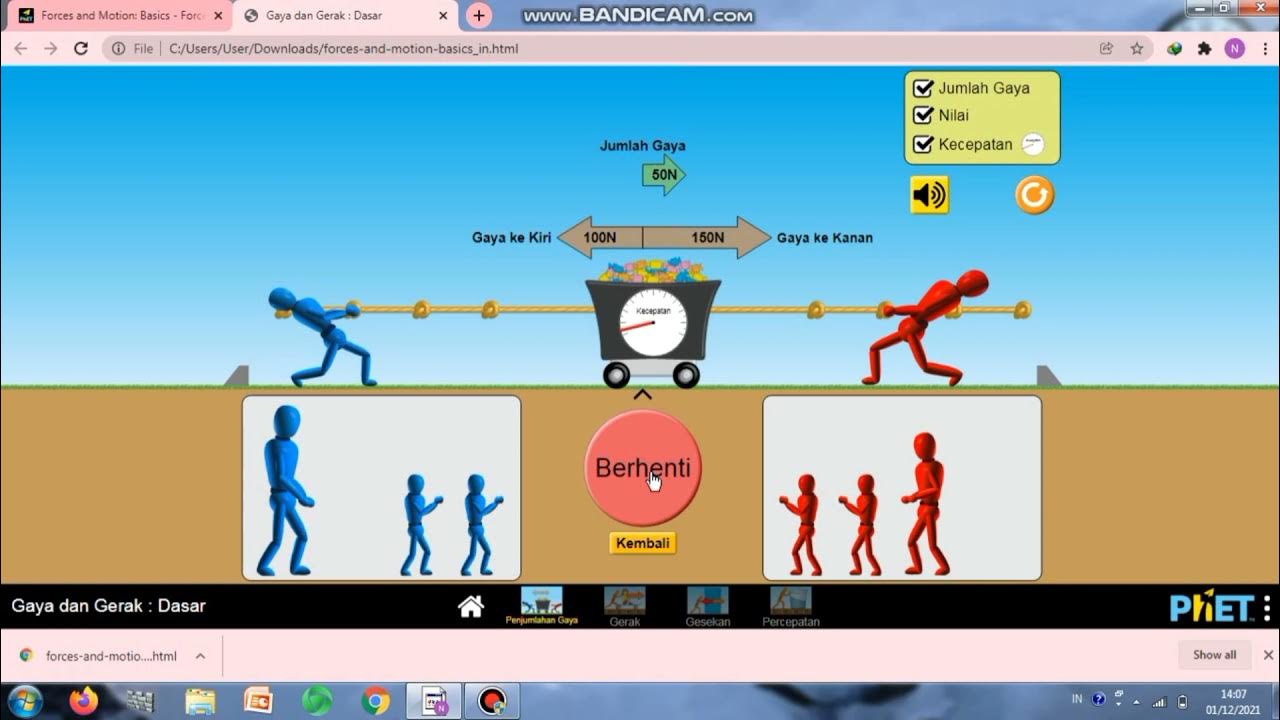GCSE Physics - Vector Diagrams and Resultant Forces #43
Summary
TLDRThis educational video demonstrates the use of scale drawings to calculate resultant forces on objects. It illustrates how to combine forces acting in different directions, such as a cyclist pushing north with a force of 4 newtons while a wind blows east with 3 newtons, resulting in a 5 newton force at 37 degrees. The video also covers the concept of equilibrium when forces balance out and the process of resolving vectors, as shown by breaking down a 50 newton force into its horizontal and vertical components on a ramp. The clear explanation and visual examples make complex physics concepts accessible.
Takeaways
- 📏 The video demonstrates using scale drawings to determine the resultant force on an object.
- 🚴♂️ An example is given of a cyclist applying a force of 4 newtons northward while a 3 newton force from the wind is blowing eastward.
- 📏 The forces are represented on a grid with arrows indicating direction and magnitude, where each newton is equivalent to one centimeter.
- 🔍 To find the resultant force, the two vectors are placed tip to tail and the magnitude is measured on the scale diagram.
- 📐 The direction of the resultant force is determined using a protractor to measure the angle from north.
- 🧭 The resultant force is calculated as 5 newtons at a bearing of 37 degrees from north.
- ⚖️ The concept of equilibrium is introduced, where forces balance out resulting in zero resultant force.
- 🔄 The order of arranging vectors does not affect the resultant force when they form a closed shape, indicating no resultant force.
- 🔄 The video also covers resolving vectors, which is the process of breaking down a vector into its horizontal and vertical components.
- 🛣️ An example of resolving a 50 newton force on a toy car going up a ramp is provided, using a scale of 10 newtons per centimeter.
- 📏 The resolved components are measured and converted to find the horizontal and vertical forces, resulting in 40 newtons to the right and 30 newtons upwards.
Q & A
What is the purpose of using scale drawings in the video?
-The purpose is to find the resultant force on an object by representing forces as vector arrows on a grid and using a scale to convert measurements.
What scenario is used to explain the concept of resultant force?
-The scenario of a man on a bike peddling northwards with a force of 4 newtons while a strong breeze blows him eastwards with a force of 3 newtons is used.
How are the forces represented on the grid in the example?
-The forces are represented as a four-centimeter arrow upwards for the northward force and a three-centimeter arrow to the right for the eastward force, with each centimeter representing one newton.
What method is used to find the magnitude and direction of the resultant force?
-The two vector arrows are placed tip to tail, and the resultant force is found by drawing a line from the starting point to the end point. The length of this line is measured and converted using the scale.
How is the resultant force measured and converted using the scale?
-The resultant force is measured to be five centimeters, which is then converted to five newtons using the scale where one centimeter equals one newton.
How is the direction of the resultant force determined?
-The direction is determined by measuring the angle between the resultant force and the north vector using a protractor, which gives an angle of around 37 degrees.
What does it mean if the forces all balance?
-If the forces all balance, the object is at equilibrium, meaning there is no resultant force acting on it.
How can forces be shown to balance on a grid?
-Forces can be shown to balance by arranging the vector arrows tip to tail. If they form a perfect triangle, it indicates zero resultant force.
What is the process of resolving vectors?
-Resolving vectors involves splitting a force into its horizontal and vertical components using a scale drawing.
How is a vector resolved into its components in the toy car example?
-The 50 newton force is represented by a 5 centimeter line at the same angle as the ramp. Horizontal and vertical lines are drawn from the ends of this line, measured, and converted using the scale to find the horizontal and vertical components.
Outlines

Этот раздел доступен только подписчикам платных тарифов. Пожалуйста, перейдите на платный тариф для доступа.
Перейти на платный тарифMindmap

Этот раздел доступен только подписчикам платных тарифов. Пожалуйста, перейдите на платный тариф для доступа.
Перейти на платный тарифKeywords

Этот раздел доступен только подписчикам платных тарифов. Пожалуйста, перейдите на платный тариф для доступа.
Перейти на платный тарифHighlights

Этот раздел доступен только подписчикам платных тарифов. Пожалуйста, перейдите на платный тариф для доступа.
Перейти на платный тарифTranscripts

Этот раздел доступен только подписчикам платных тарифов. Пожалуйста, перейдите на платный тариф для доступа.
Перейти на платный тарифПосмотреть больше похожих видео

Introduction to Forces in Space - Forces in Space - Engineering Mechanics

Kesebangunan & Kongruensi (1) - Model dan Skala, Perbandingan Foto - Matematika SMP

Belajar IPA | Gaya dan Resultannya Kelas VIII SMP/MTs

PETUNJUK PRAKTIKUM PENGUKURAN MASSA MENGGUNAKAN NERACA 4 LENGAN (OHAUS) KELAS 7

GCSE Biology Revision "Required Practical 1: Microscopes"

Simulasi Phet Hukum Newton | Media Pembelajaran Fisika
5.0 / 5 (0 votes)
